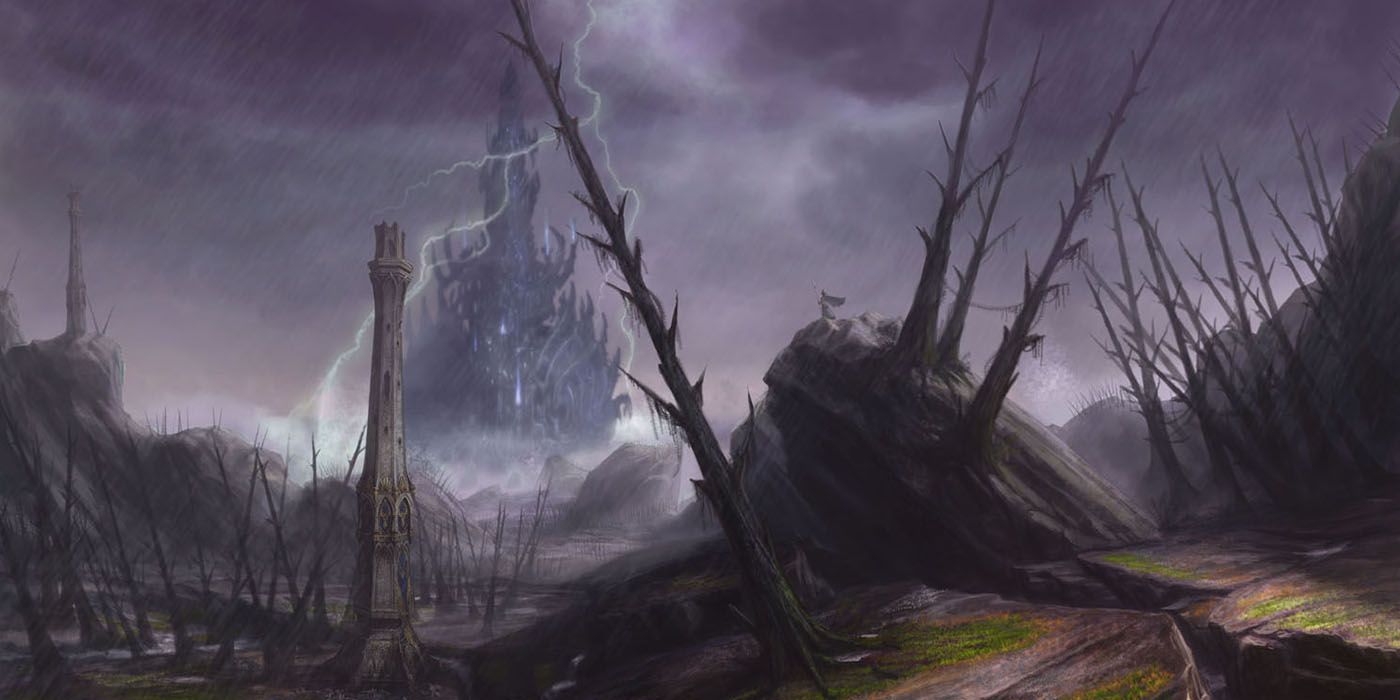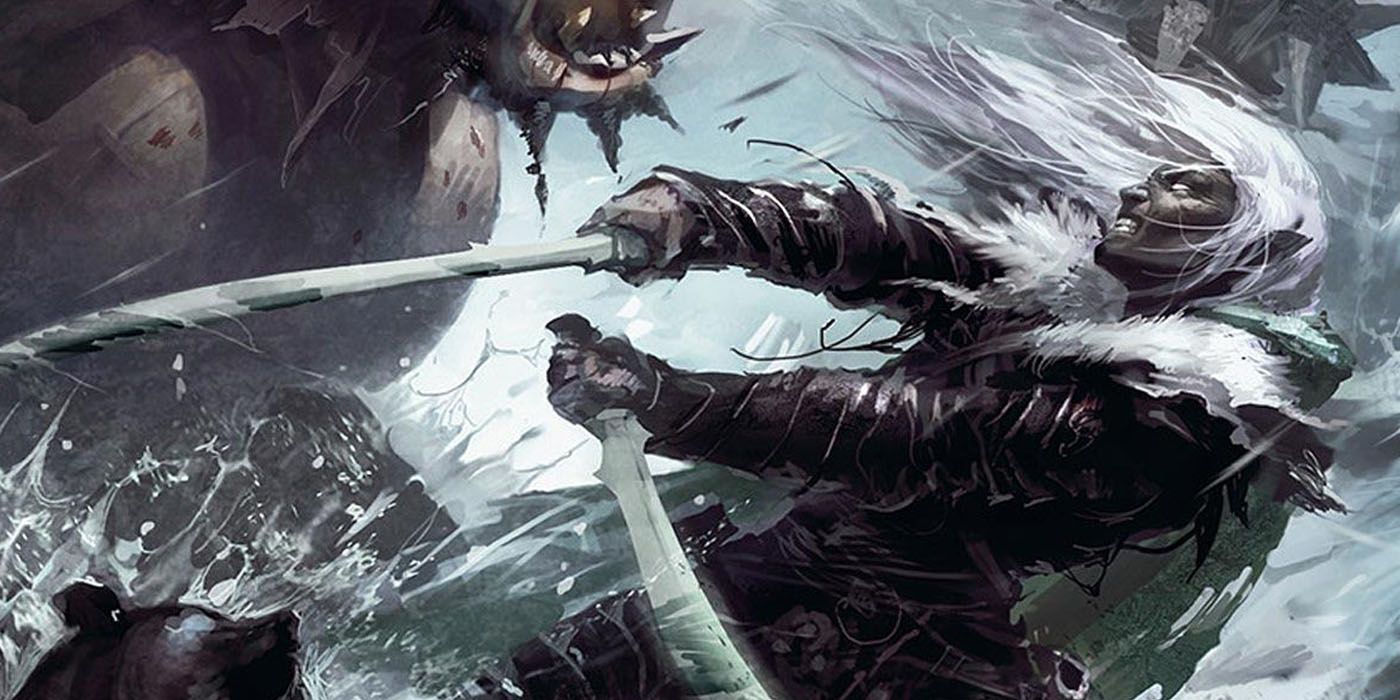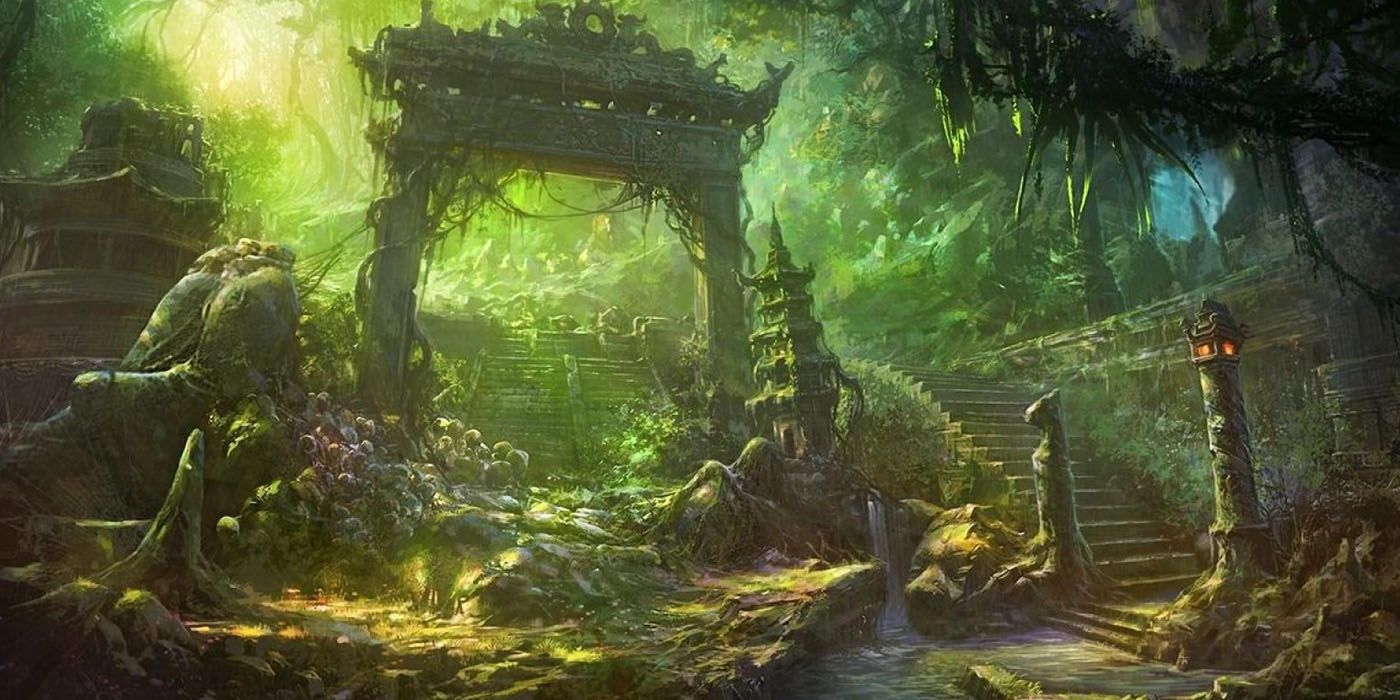It's easy enough to follow along with a 5th edition campaign sourcebook when running a Dungeons & Dragons adventure for a group of players, but there's a certain magic in D&D homebrewing that appeals to many-a-Dungeon Master. Yet, for those who like to take the roads less traveled, both DMs and players alike, the land of Faerun (and beyond) has a ton of amazing locations that have tragically become forgotten.
Faerun is, of course, the continent just about every official Dungeons & Dragons adventure from Wizards of the Coast takes place on, part of the immensely popular Forgotten Realms campaign setting. While the existing 5th edition sourcebooks will take player characters everywhere from Ten Towns to the Underdark, Baldur's Gate to the Nine Hells themselves, there's far too much in the Forgotten Realms for even over fifteen different written adventure books to cover.
DMs looking to play around with a "new" and interesting locale can take a look at the various Forgotten Realms hotspots below. Experienced players can revisit old iconic favorites, and new players can enjoy the experience of a unique and memorable 5th edition adventure setting.
Icewind Dale
One way to get players invested in their D&D campaign is the bring them to a place they already recognize from other D&D-related media. Case in point: Icewind Dale is famously the surface-world homeland of Drizzt Do'Urden, the drow folk hero of Faerun, and the main setting for the popular Icewind Dale video game series. Using that logic, Baldur's Gate would also apply, but that city already has a place in the official 5th edition sourcebooks.
Icewind Dale, meanwhile, isn't actually a city: it's an icy tundra in the far north (and actually, the northernmost area to be explored in all of Faerun). A D&D party could go and visit Ten Towns, the main settlements of Icewind Dale, or strike out onto the region's one icy mountain, Kelvin's Cairn.
Zhentil Keep
Zhentil Keep is a notorious city in the Moonsea region, once the main base of operation for the Zhentarim organization before being razed in retaliation in the 14th century of Faerun's history. As of 5th edition, Zhentil Keep had been retaken by the Zhentarim leaving the city's few surviving unaffiliated inhabitants to try and withstand its dangers as best they could, while all others who tried to return to the city after its retaking were turned away. That means Zhentil Keep stands, but it is far from the bustling city it once was in previous editions of D&D. For parties affiliated with the Zhentarim, Zhentil's Keep could be the start of an adventure--or, for parties opposing the nefarious Zhentarim, the city could very well turn into a battleground.
The Lost Empires
The Lost Empires are an interesting element to add into a Forgotten Realms campaign because the currently established empires aren't set up next to them, they're generally set up right over the top of the Lost Empires' ruins. So, any DM looking to trap their players lost in some long-abandoned, probably cursed ruins can take a look at the fallen civilizations of Faerun's past.
Lots of seasoned DMs have likely heard of Netheril, the civilization whose downfall was hubris, brought crashing to the sands of the Anauroch desert when its own use of magic caused magic to disappear entirely. An adventure there could easily turn into a Netherese treasure hunt or another such scenario, and it's also just a great excuse to explore the dangerous and mysterious Anauroch. There's also other lost empires, like Eaerlann, the elven civilization once in the High Forest, or Coramshan, the predecessor to Calimshan. For those wanting to stay a little closer to well-documented present-day societies, there's the grand elven kingdom of Illefarn, its capital city once located right where the lands around Waterdeep now stand.
Basically, DMs looking to start a campaign somewhere familiar before heading into an Indiana Jones-esque homebrew adventure can check out one of the Forgotten Realms' many lost empires.
Amn (Athkatla)
Remember the aforementioned Baldur's Gate game? Well, the actual city of Baldur's Gate is covered, but not every area explored in the series is. The land south of the Sword Coast, Amn, is the setting for BG II: Shadows of Amn (arguably the best of the Baldur's Gate trilogy), and it's ripe for exploration in a homebrew adventure. In previous editions, Amn's capital city of Athkatla had actually banned the use of magic without a license, which could give adventuring parties with arcane practitioners quite the challenge. It's a city even larger than the northern Baldur's Gate, wealthy but corrupt and perfect for political intrigue or encounters with the city's seedy underbelly run by the Shadow Thieves.
The Feywild
The Feywild isn't in Faerun, but it's Faerun-adjacent; along with the Plane of Shadow, the Feywild is a plane that echoes the Prime Material. That means the Feywild is much more connected to Faerun than other planes, so an adventuring party could just find themselves falling into a pond and coming out in the homeland of the fey.
Designing a campaign in the Feywild would be an interesting method of changing the rules of the world without actually changing campaign settings. The Feywild is a land governed by emotion and inhabited almost exclusively by fey creatures: pixies, gnomes, dryads, hags, eladrin, and the like. Time passes differently there, the forests themselves are magical and almost self-aware, and it's entirely possible for those who return from the Feywild to completely forget their trip upon leaving.
The World Serpent Inn
Sometimes a DM may think to themself, "how do I get my players from one plane to another?" There's no specified portal in any 5th edition sourcebook, or even any indication that the two planes in question ever connect in existing D&D canon--and yet, the party still needs to make the trip. There's an old location that first appeared in Advanced Dungeons & Dragons called the World Serpent Inn, and it's a place that exists everywhere and nowhere all at the same time.
Sigil isn't the only place in the cosmos with infinite doors; the Serpent essentially contains an endless number of labyrinthian hallways filled with portals, meaning that it gives any DM who uses it the freedom to take their campaign anywhere they please. The reason that the inn technically counts as a "Forgotten Realms" location is that it has entrances in many D&D campaign settings, and its Faerun entrance is right on the northern side of the city of Arabel, in Cormyr.
Fun fact: the Forgotten Realms and Eberron are two totally separate cosmologies that supposedly don't exist in the same canon, and yet, it's an established fact that the World Serpent Inn contains a portal to Khorvaire. With the World Serpent in a campaign, a DM's options are literally limitless.
There's nothing wrong with sticking to the locations mapped out in 5th edition by Wizards of the Coast, but there's also a reason that so much supplementary material exists out there. Dungeons & Dragons was never a game that required its players to adhere to one particular setting or method of play, and that's the beauty of it. DMs looking for a certain spot in the Forgotten Realms to place their own homebrewed campaign need only take a look at Faerun's vast map: there is, without a doubt, a location for any and every adventure.



